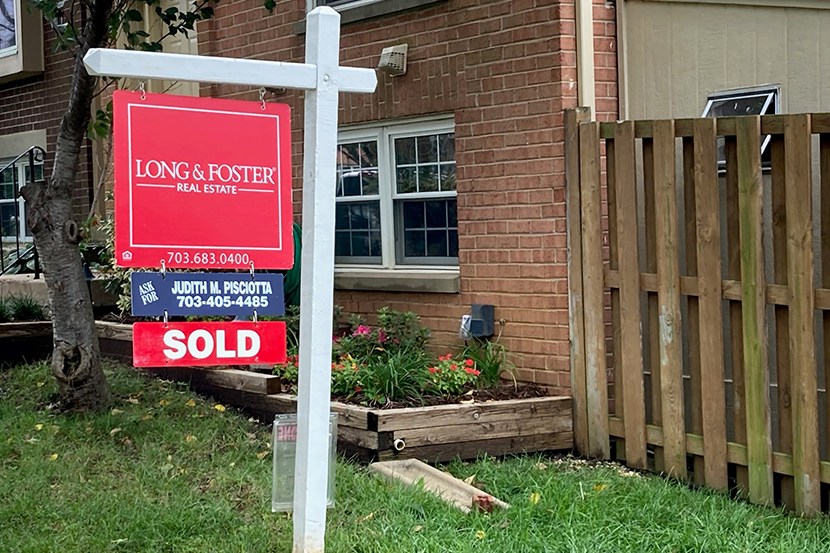
November Existing Home Sales Down 2.5%

Low housing inventories finally caught up with November existing home sales, which fell for the first time in five months, the National Association of Realtors reported yesterday.
The report said total November existing home sales (https://www.nar.realtor/existing-home-sales) fell by 2.5% from October to a seasonally adjusted annual rate of 6.69 million in November. However, sales rose year-over-year, up 25.8% from a year ago (5.32 million).
Single-family home sales fell to a seasonally adjusted annual rate of 5.98 million in November, down 2.4% from 6.13 million in October but up 25.6% from one year ago. The median existing single-family home price rose to $315,500 in November, up 15.1% from a year ago. Existing condominium and co-op sales fell to a seasonally adjusted annual rate of 710,000 units in November, down 2.7% from October but up 26.8% from one year ago. The median existing condo price was $271,400 in November, an increase of 9.5% from a year ago.
Regionally, sales fell or held steady month over month but increased by double-digit rates on a year over year basis. Sales in the Northeast fell by 2.2% to an annual rate of 880,000, but improved by 25.7% increase from a year ago. The median price in the Northeast rose to $354,100, up 17.4% from a year ago. In the Midwest, sales fell by 2.5% to an annual rate of 1.59 million in November, but improved by 24.2% from a year ago. The median price in the Midwest rose to $239,100, a 14.6% increase from a year ago9.
Sales in the South decreased by 3.8% to an annual rate of 2.82 million in November but improved by 25.9% from a year ago. The median price in the South rose to $270,000, a 15.0% increase from a year ago. Sales in the West were unchanged from last month, at an annual rate of 1.4 million in November, but improved by 27.3% increase from a year ago. The median price in the West rose to $467,600, up 13.8% from a year ago.
“Existing home sales declined 2.5 percent in November, but at 6.7 million units, the average annual sales pace for the past three months was the strongest stretch since 2006,” said Joel Kan, Associate Vice President of Economic and Industry Forecasting with the Mortgage Bankers Association. “Now at five months of year-over-year sales gains, the housing sector remains strong through the slow, but ongoing economic recovery.”
Kan said lack of inventory is cause for concern, along with the upward pressure it is putting on home prices. “In 2021, rising home prices caused by robust demand and tight housing supply could adversely impact lower-income and first-time homebuyers,” he said. “MBA forecasts for a strong year of purchase originations, home sales and new housing starts, but more new and existing housing supply is needed to preserve housing affordability.”
NAR Chief Economist Lawrence Yun noted although home sales in November took a marginal step back, sales for all of 2020 are already on pace to surpass last year’s levels. “Given the COVID-19 pandemic, it’s amazing that the housing sector is outperforming expectations,” he said.
Yun notes that job recoveries have stalled in the past few months, and fast-rising coronavirus cases along with stricter lockdowns have weakened consumer confidence.
“Circumstances are far from being back to the pre-pandemic normal,” he said. “However, the latest stimulus package and with the vaccine distribution underway, and a very strong demand for homeownership still prevalent, robust growth is forthcoming for 2021.”
“COVID has boosted demand for homes but has also meant that fewer homeowners are willing to put their homes on the market,” said Mark Vitner, Senior Economist with Wells Fargo Securities, Charlotte, N.C. “The imbalance pulled home prices higher, with the median price of existing single-family homes jumping 15.1% from a year ago. “The recent surge in prices has brought memories of the housing bubble. Key differences today are the absence of widespread speculation and the higher credit quality of today’s borrowers.”
Other report findings:
–The median existing home price for all housing types in November rose to $310,800, up 14.6% from November 2019 ($271,300), as prices increased in every region. November’s national price increase marks 105 straight months of year-over-year gains.
–Total housing inventory at the end of November totaled 1.28 million units, down 9.9% from October and down 22% from one year ago (1.64 million). Unsold inventory sits at a record-low 2.3-month supply at the current sales pace, down from 2.5 months in October and down from the 3.7-month figure recorded a year ago.
–Properties typically remained on the market for 21 days in November, seasonally even with October and down from 38 days in November 2019. Seventy-three percent of homes sold in November were on the market for less than a month.
–First-time buyers were responsible for 32% of sales in November, equal to both October and a year ago.
–Individual investors or second-home buyers purchased 14% of homes in November, identical to October but a small decline from 16% a year ago. All-cash sales accounted for 20% of transactions in November, up from 19% in October but unchanged from a year ago.
–Distressed sales represented less than 1% of sales in November, equal to October’s percentage but down from 2% a year ago.
